Game Changers
Alex Smith, His Journey to America, Championships and a PGA Legacy
By David Mackesey
Published on
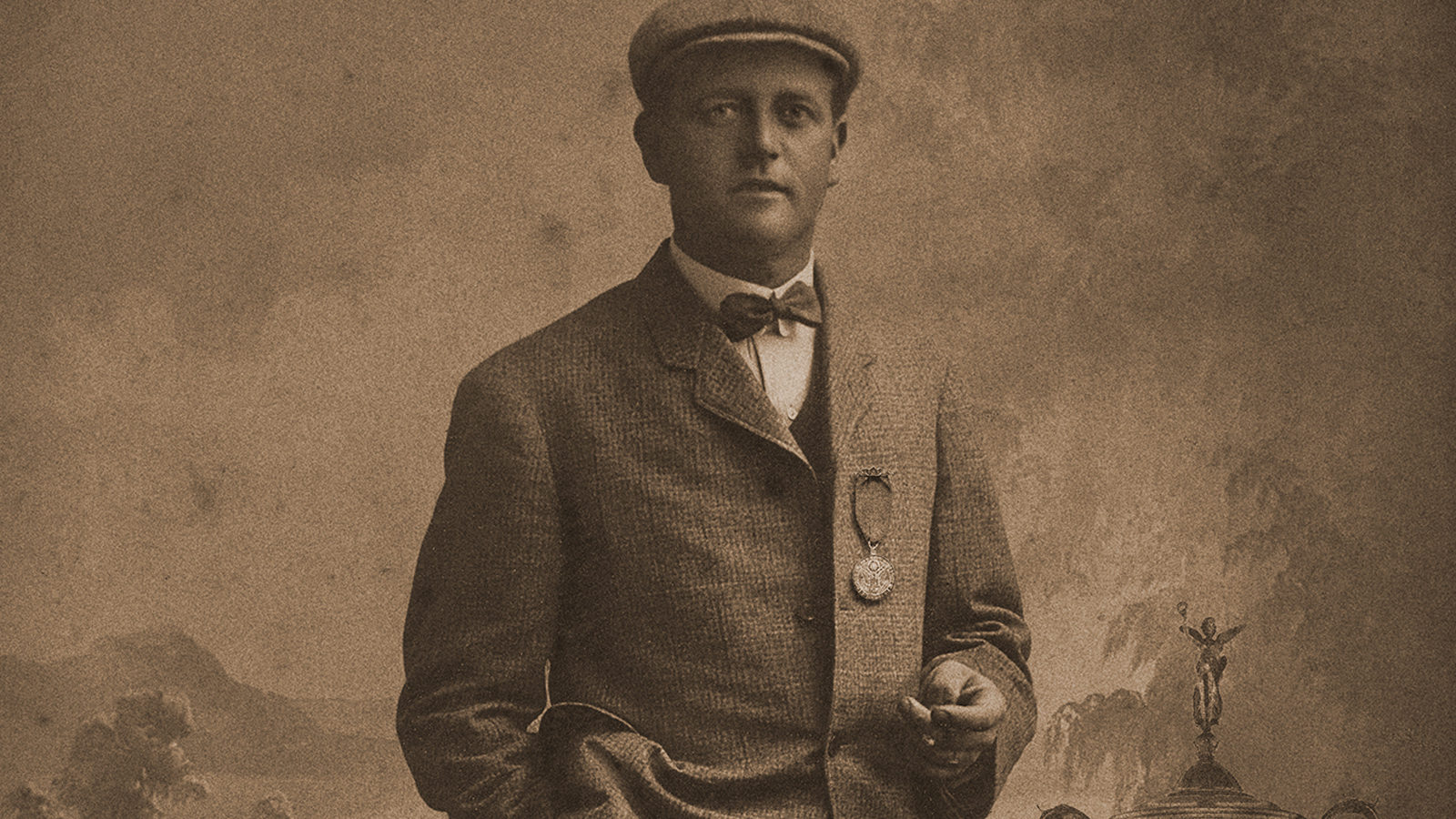
Alex Smith.
Alex Smith wasn’t born with a golf club in his hand. That romantic tale was for others of his generation in and around the cradle of golf, his beloved Scotland. His journey was different and harder, perhaps explaining why Alex became such a unique force for golf in America.
John and Joann Smith brought Alex, their firstborn of 10 children, into a troubled world. He was born on January 28, 1874, in the shadows of the mammoth jute mills and smokestacks of industrialized Dundee, Scotland. The only thing more depressing than the mills with their giant machines, thunderous noise and intense odors from rancid whale oil used to soften jute, was the short walk after work to the overcrowded slums and the one-room shanties the desperately poor mill worker families called home.
Like his father, and his father’s father, life as a jute mill worker, often beginning as a “half timer” as early as age 10, was Alex’s birthright.
THE MIRACLE
Just before Alex’s 10th birthday, John and Joann Smith, now with four young boys in tow, moved 10 miles to the East to Joann’s place of birth, a small but growing village called Carnoustie. Today 10 miles may seem an insignificant distance, but in 1883 Forfarshire, Scotland, that distance outside of Dundee in any direction was a world away from desperation for the working class. Joann knew it all too well.
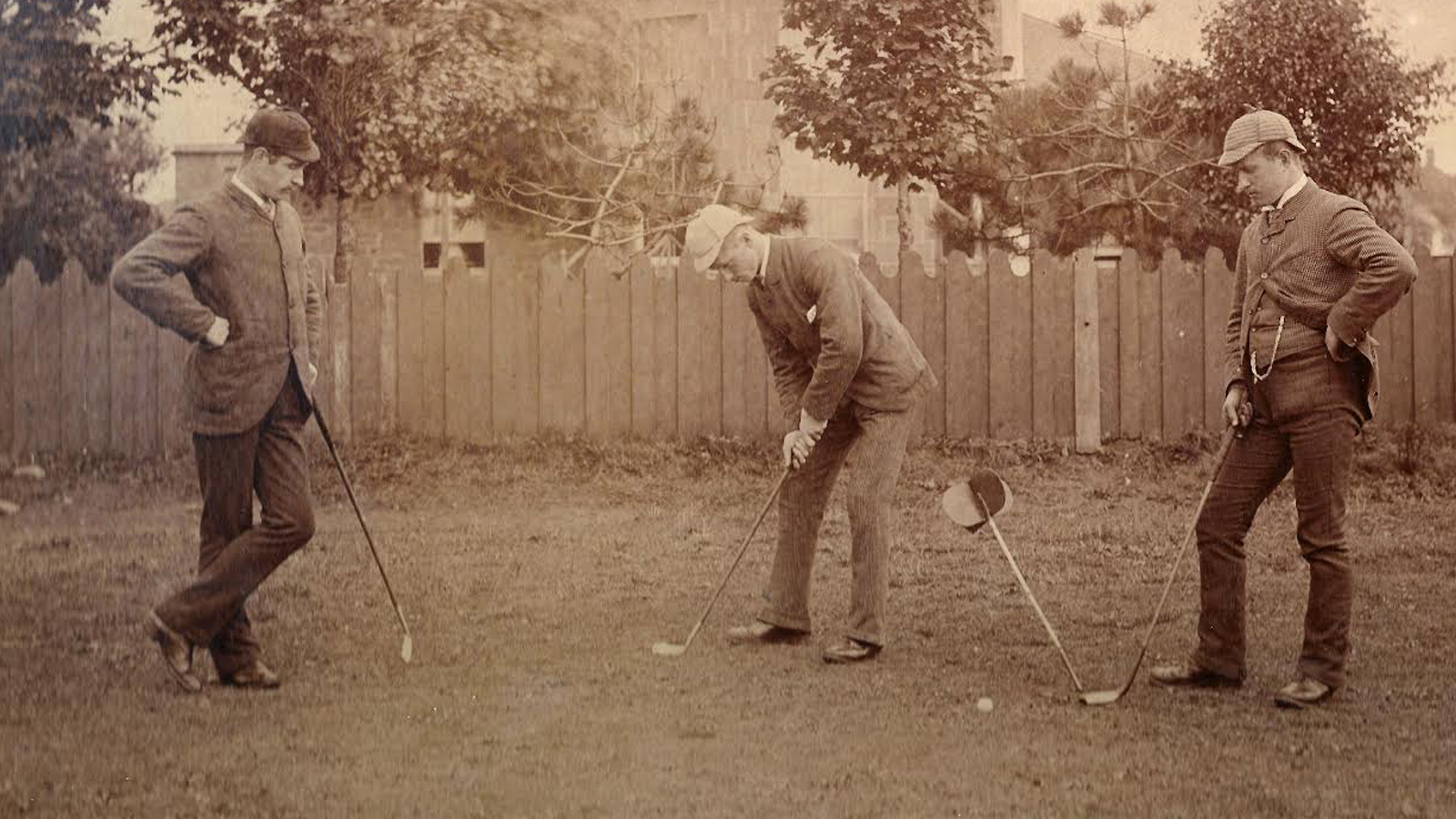
Jack, Archie and Robert Simpson inspired generations of golfers from Carnoustie to all corners of the world
The same year, Robert Simpson of Elie, and his brothers Jack and Archie moved to Carnoustie as clubmakers and as caretakers to the links. The Simpsons brought championship golf to Carnoustie, and in 1884 the Champion Golfer of the Year Medal was won by Jack as further proof. The medal was shown with pride, and inspired a generation of young golfers. Robert offered employment as a club maker to the best of the local generation. Alex rose to the top of both, as a young player, and as foreman for Robert Simpson.
In 1898, golf in America was literally exploding, with new courses seeming to open every week. The Washington Park Club, Chicago’s largest private club, placed a local Scotland advertisement seeking four club makers for the summer, with a round trip sailing journey arranged. Alex applied, and was selected along with three St. Andrews club makers, including Fred Herd. They arrived in Chicago in March and returned to Scotland in November. During their eight-month visit, Fred Herd and Alex Smith became stars, and finished 1-2 in the U.S. Open.
THE FLOOD GATES OPEN
Alex Smith arrived back to Carnoustie to a hero’s welcome, and the birth of his second daughter. Unfortunately, he couldn’t stay long. While many of the other professionals were slated to return to America in the spring of 1899, Alex was needed now. In early January, he returned to the U.S. to accompany Washington Park members to a grand winter golf season at Hotel Del Coronado, San Diego.
Dozens more club makers boarded the spring ships for the States. In this wave Alex’s younger brothers Willie and George Smith arrived in April. The 1899 U.S. Open was dominated by Scottish immigrants again, and this time, Alex watched as his own sibling, Willie Smith, ran away from the field to win by 11 strokes.
There was no stopping it now, the best club makers in Scotland willing to take their chances in America boarded ships each spring to become golf professionals, and spread the game.
ALEX’S CHAMPIONSHIPS
By 1906, 32 year old Alex Smith had finished 2nd three times in the U.S. Open, and it seemed like his dream to earn a national title may forever elude him. At Onwentsia, north of Chicago, Alex stormed to a tie for the U. S. Open lead in the first round, and then went wire-to-wire for the win. His 295 total made him the first to break 300 for 72 holes in U.S. Open history. A true Carnoustie family affair, brother Willie finished runner-up, and brother-in-law Jimmie Maiden finished tied for third.
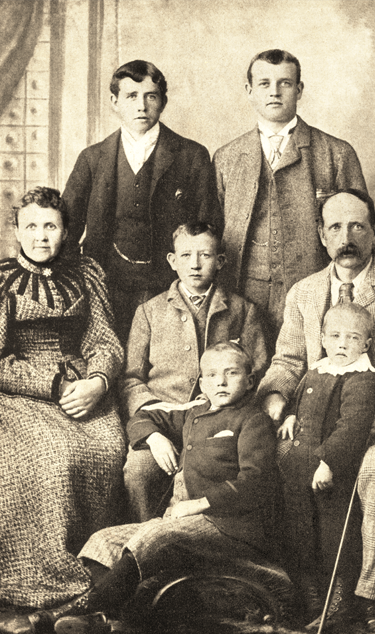
The Smith's of Carnoustie. Left to right, standing: Willie and Alex. Middle row: Joann, George and John. Below: Jim and Macdonald.
In 1910, Alex again won the U.S. Open, and like before, a brother was his rival. This time, youngest brother Macdonald tied Alex after 72 holes, along with American Johnny McDermott. Alex won a three-way playoff.
MAKER OF CHAMPIONS
Like many from his hometown of Carnoustie, Alex took great pride in teaching the game to those inclined to make something of themselves. Countless professionals earned their start under Alex’s tutelage.
The World Golf Hall of Fame inducted three of his top students. Jerry Travers, who won four U.S. Amateur titles and the 1915 U.S. Open. Marion Hollins, winner of the U.S. Women’s Amateur title in 1921. Glenna Collett, who captured six U.S. Women's Amateur titles between 1922 and 1936.
As Alex approached 40, and his championship career was winding down, Walter Hagen’s was just beginning. They first met at the Canadian Open in 1912, and the two had a natural attraction. Both were brash, confident and with money on the line, had ice in their veins. In the late fall of 1915, they arranged a series of $1,000 four-ball matches before Alex’s Florida winter season duties.
Thousand dollar purses proved that times were changing for golf fans. They were demanding more exposure to the best golfers in America and professional golf was ready to organize. Hagen stayed in New York, and though he didn’t attend the PGA’s organizing luncheon in January 1916, he would represent the views of young and old in the early development of the PGA of America.
Hagen eventually became the best putter of his day. He studied the lie quickly and confidently stepped up to tap the ball without delay.
“I learned that from Alex Smith. Alex used to say, ““If you’re gonna miss ‘em, miss ‘em quick.”” It’s mainly a question of confidence and yet even then you have to have that quality in the precise degree.”-- Walter Hagen, July 3, 1954, on the lessons from his friend, Alex Smith
Alex Smith possessed a deep sense of purpose. He made America his adopted home, but never forgot his roots. Nearing death in 1930, his final request was that his own championship medals, 15 in all, be gifted to the club of his childhood, Carnoustie Golf Club. Alex Smith passed on April 20, 1930.
In 1931, Carnoustie hosted its very first of eight Open Championships. Youngest brother and fellow future PGA Hall of Fame member Macdonald Smith traveled to Carnoustie to compete in The Open and personally deliver his brother’s medals to the club of their childhood.
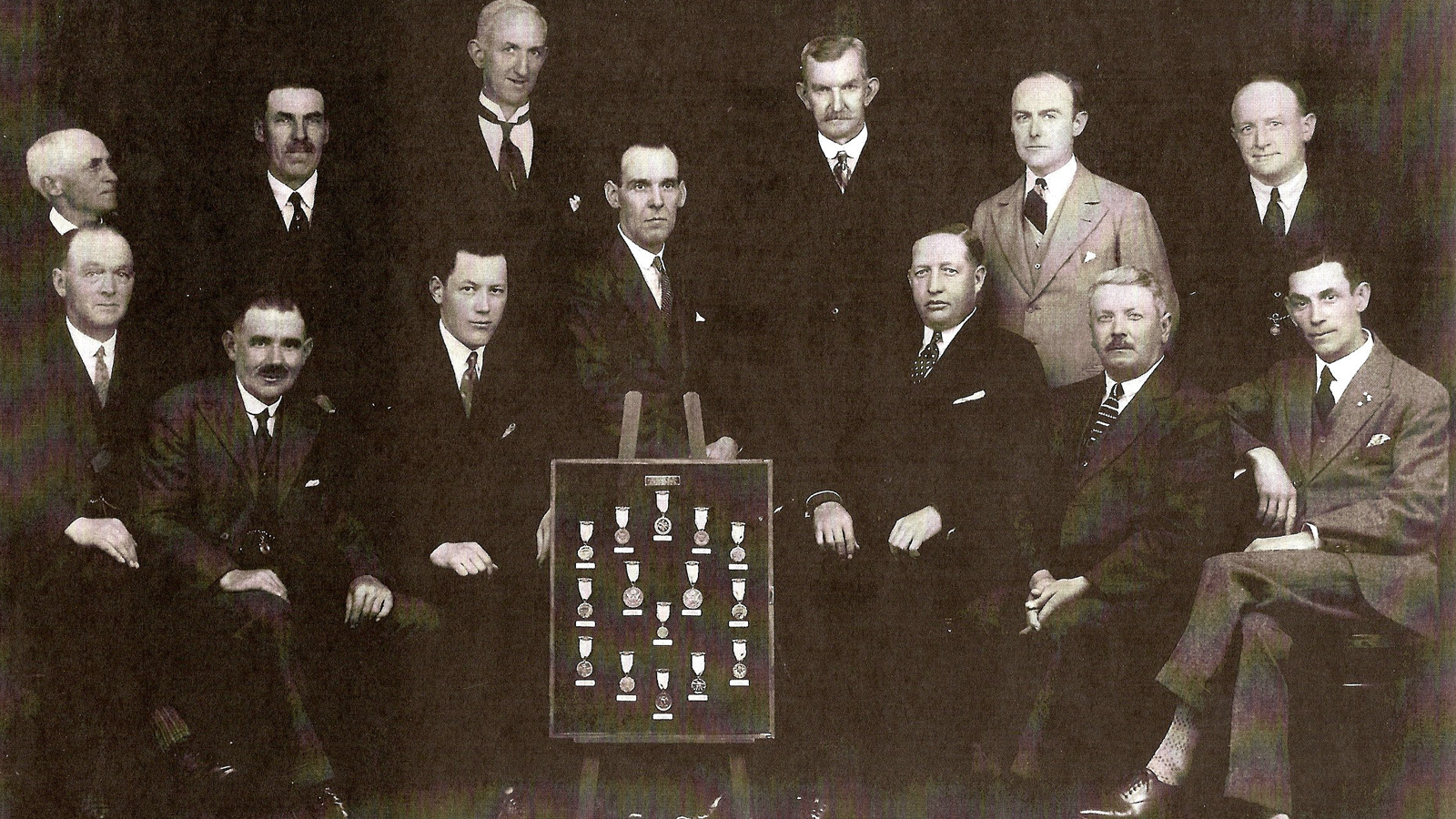
Macdonald Smith, seated to the right of the championship medals board, presenting the bequeathed collection of his recently deceased brother Alex, to the club of their childhood, Carnoustie Golf Club.
The golf world lost Macdonald Smith in 1949. His championship medals, 28 in all, joined with brother Alex’s at Carnoustie Golf Club in 1950. Henry Cotton personally presented them to Carnoustie Golf Club on behalf of Macdonald’s widow, Louise Harvey Smith. To this day, the one of a kind museum quality collection has been proudly displayed at Carnoustie Golf Club.
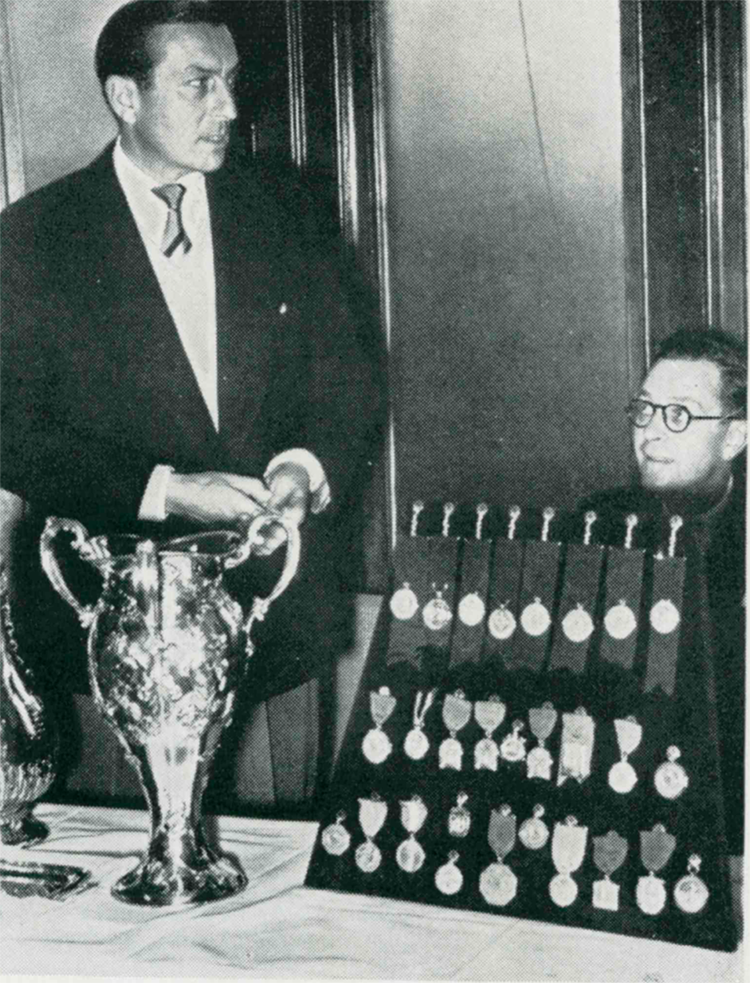
Family friend Henry Cotton presenting Mcdonald Smith’s championship medals to Carnoustie Golf Club, 1950.
The Smith Society of Golf Clubs was formed in 2015, to celebrate the collection, and the deep ties of the Smith’s of Carnoustie with the North American golf clubs they adopted as home. Like the family, the Society in North America is centered at Diablo Country Club, in the San Francisco Bay Area.
In 2020, the trophy that was held by PGA Champions and Medalists, the Alex Smith Memorial Trophy, was privately acquired from the PGA archives. Today, this historic trophy is paired with the bequeathed collection of PGA Hall of Fame members Alex Smith and Macdonald Smith.
The Smith Society of Golf Clubs is dedicated to the mission of Alex Smith and his family, “To stir young ambitions in golf to similar lofty achievements,” and inspire future generations of golfers.
-- David Mackesey is Club Historian, Carnoustie Golf Club, Historian, Diablo (California) Country Club and Co-Chair, The Smith Society

